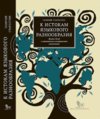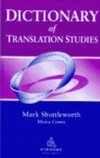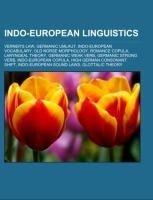
Indo-European linguistics
Source: Wikipedia. Pages: 69. Chapters: Verner's law, Germanic umlaut, Indo-European vocabulary, Old Norse morphology, Romance copula, Laryngeal theory, Germanic weak verb, Germanic strong verb, Indo-European copula, High German consonant shift, Indo-European... Viac o knihe
Produkt je dočasne nedostupný
18.39 €
bežná cena: 20.90 €
O knihe
Source: Wikipedia. Pages: 69. Chapters: Verner's law, Germanic umlaut, Indo-European vocabulary, Old Norse morphology, Romance copula, Laryngeal theory, Germanic weak verb, Germanic strong verb, Indo-European copula, High German consonant shift, Indo-European sound laws, Glottalic theory, Sievers' law, Germanic verb, Classification of Thracian, Latin-to-Romanian sound changes, Grassmann's law, Lexikon der indogermanischen Verben, Brugmann's law, Bartholomae's law, Grammatischer Wechsel, Historische Sprachforschung, Thraco-Illyrian, Romance plurals, Graeco-Armenian, Augment, Indo-European Etymological Dictionary, Athematic stem, Ruki sound law, Cowgill's law, Grundriß der vergleichenden Grammatik der indogermanischen Sprachen, Injunctive mood, Terpsimbrotos, Indogermanisches etymologisches Wörterbuch, K¿etwóres rule, Boukólos rule, Privative a, Indogermanische Forschungen, East Germanic strong verb, Journal of Indo-European Studies, Copulative a, Emmanuel Laroche, TITUS, V¿ddhi. Excerpt: The following is a table of the many of most fundamental Proto-Indo-European language (PIE) words and roots, with their cognates in all of the major families of descendants. The following conventions are used: In place of Latin, an Oscan (c. 100 BC) or Umbrian (c. 200 BC) cognate is occasionally given when no corresponding Latin cognate exists. Similarly, a cognate from another Anatolian language (e.g. Luvian, c. 1400 BC; Lycian, c. 400 BC) may occasionally be given in place of or in addition to Hittite (c. 1400 BC).For Tocharian, both the Tocharian A (c. 800 AD) and Tocharian B (c. 800 AD) cognates are given whenever possible.For the Celtic languages, both Old Irish (c. 800 AD) and Welsh cognates are given when possible. For Welsh, normally the modern form is given, but occasionally the form from Old Welsh (c. 800 AD) is supplied when it is known and displays important features lost in the modern form. A Middle Irish (c. 1000 AD) cognate is given when the Old Irish form is unknown, and Gaulish (c. 0 AD), Cornish (?? c. 1200-1700 AD?) and/or Breton (modern) cognates may occasionally be given in place of or in addition to Welsh.For the Balto-Slavic languages, both Old Church Slavonic (c. 1000 AD) and Lithuanian (modern) cognates are given when possible. Similarly to the Celtic situation, Old Lithuanian (c. 1600 AD) forms may occasionally be given in place of modern Lithuanian; Latvian (modern) and/or Old Prussian (c. 1400 AD) forms may occasionally be given in place of or in addition to Lithuanian; and forms from modern Slavic languages or other Church Slavic dialects may occasionally be given in place of Old Church Slavonic.For English, a modern English cognate is given when it exists, along with the corresponding Old English (c. 1000 AD) form; otherwise, only an Old English form is given.For Gothic (c. 350 AD), a form in another Germanic language (Old Norse, c. 1200 AD; Old High German, c. 900 AD; or Middle High German, c. 1200 AD) is sometimes given in its place o
- Vydavateľstvo: Books LLC, Reference Series
- Formát: Paperback
- Jazyk:
- ISBN: 9781157249665



 Anglický jazyk
Anglický jazyk 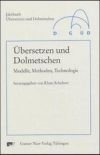
 Nemecký jazyk
Nemecký jazyk 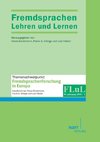

 Ruský jazyk
Ruský jazyk 

